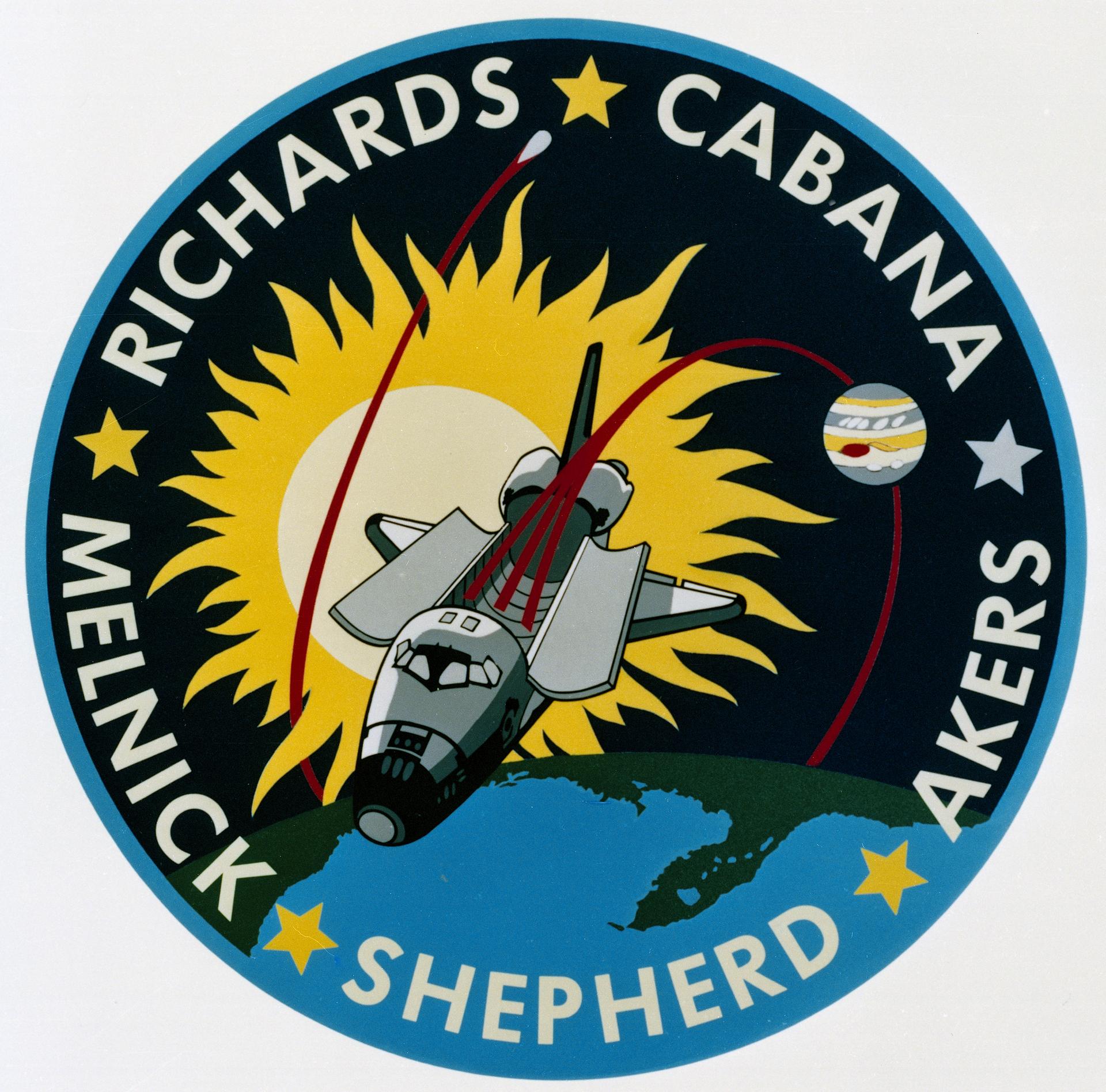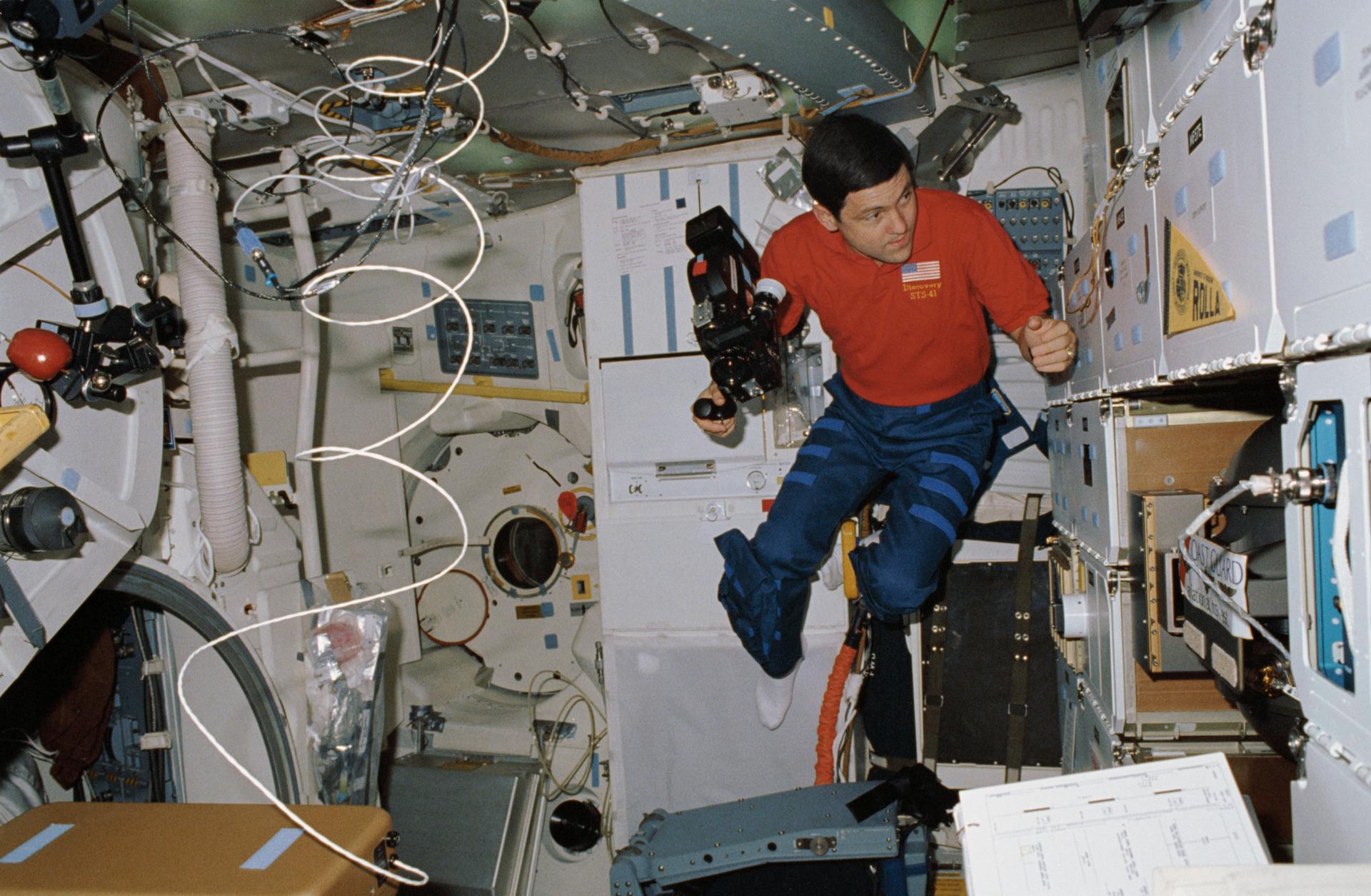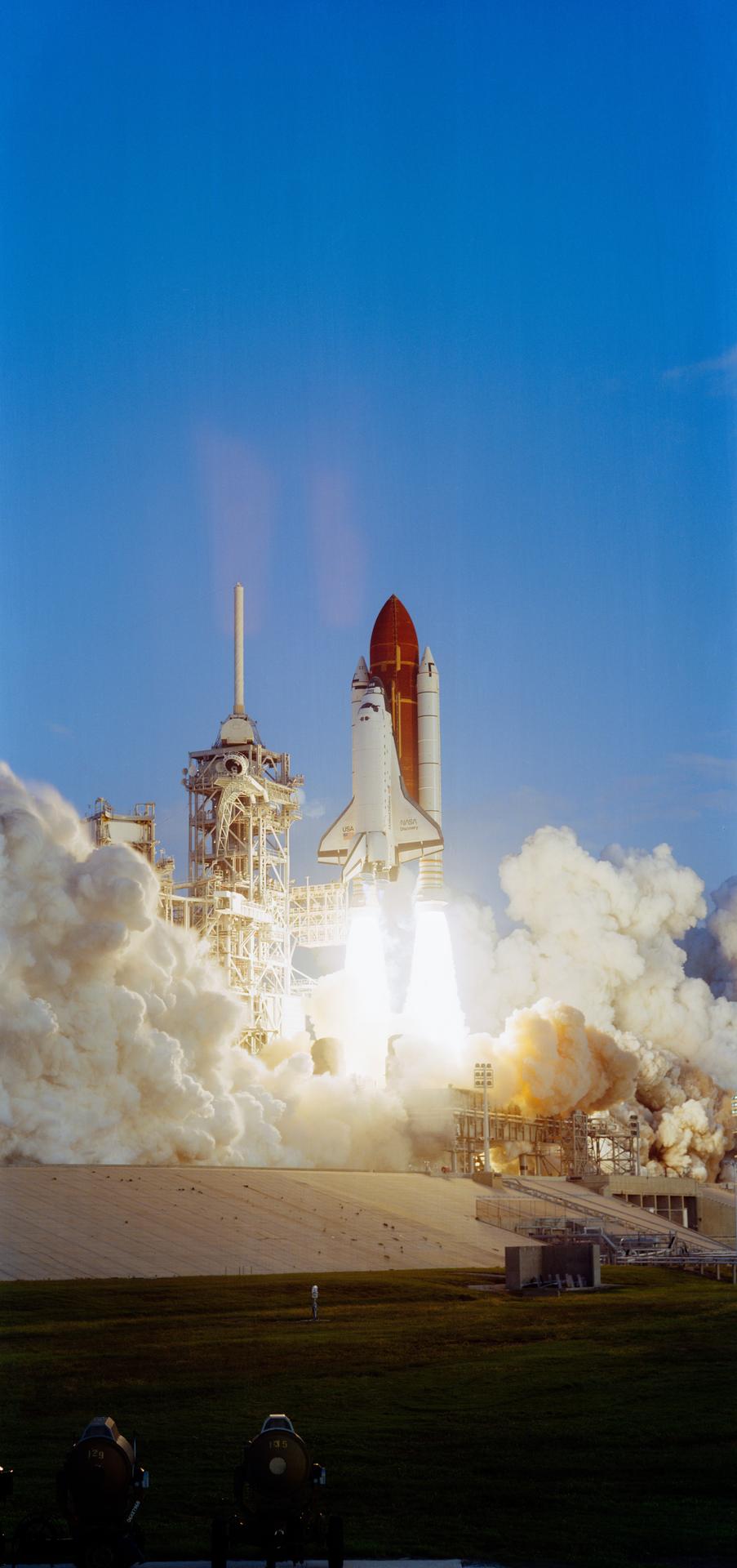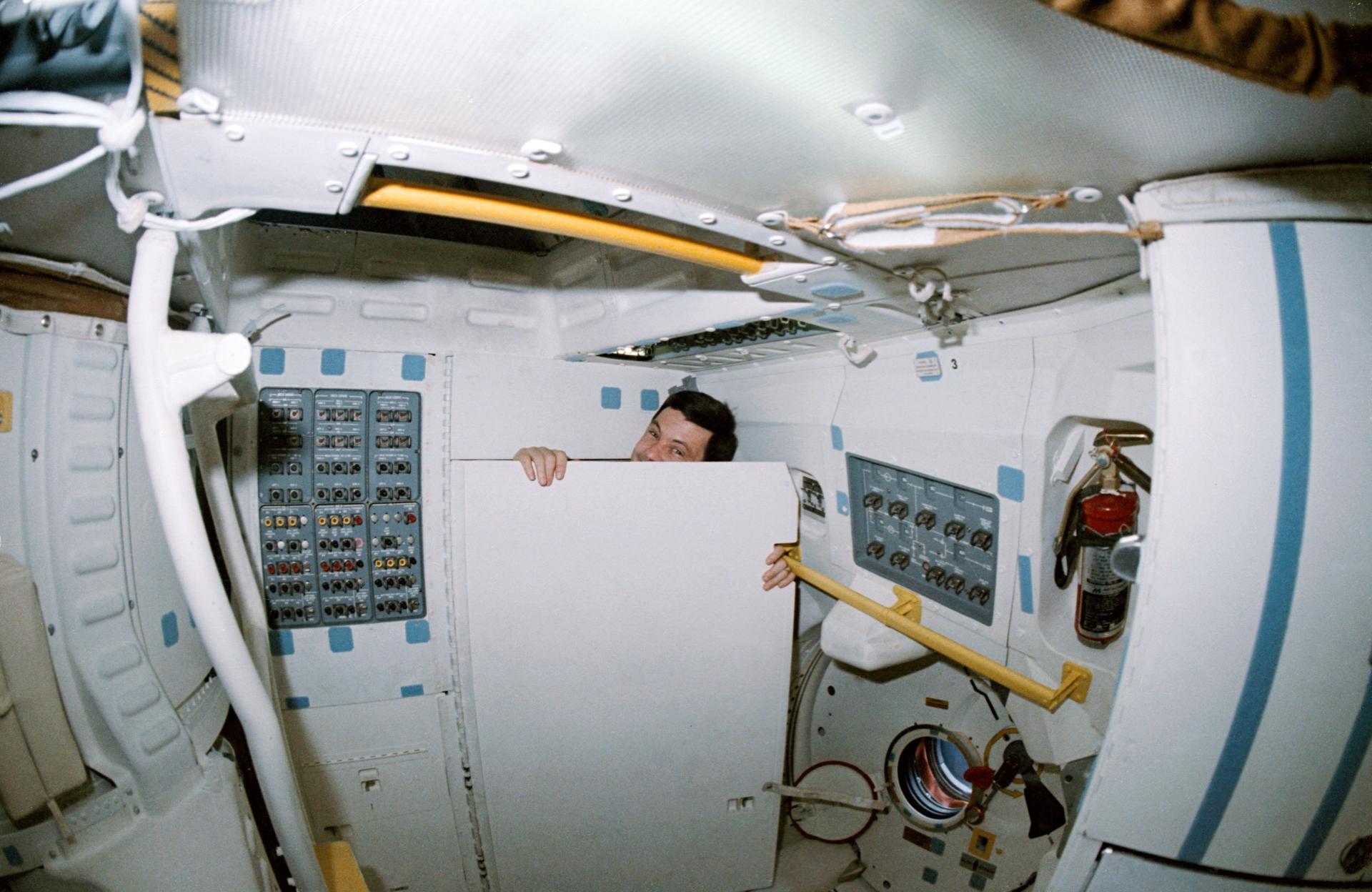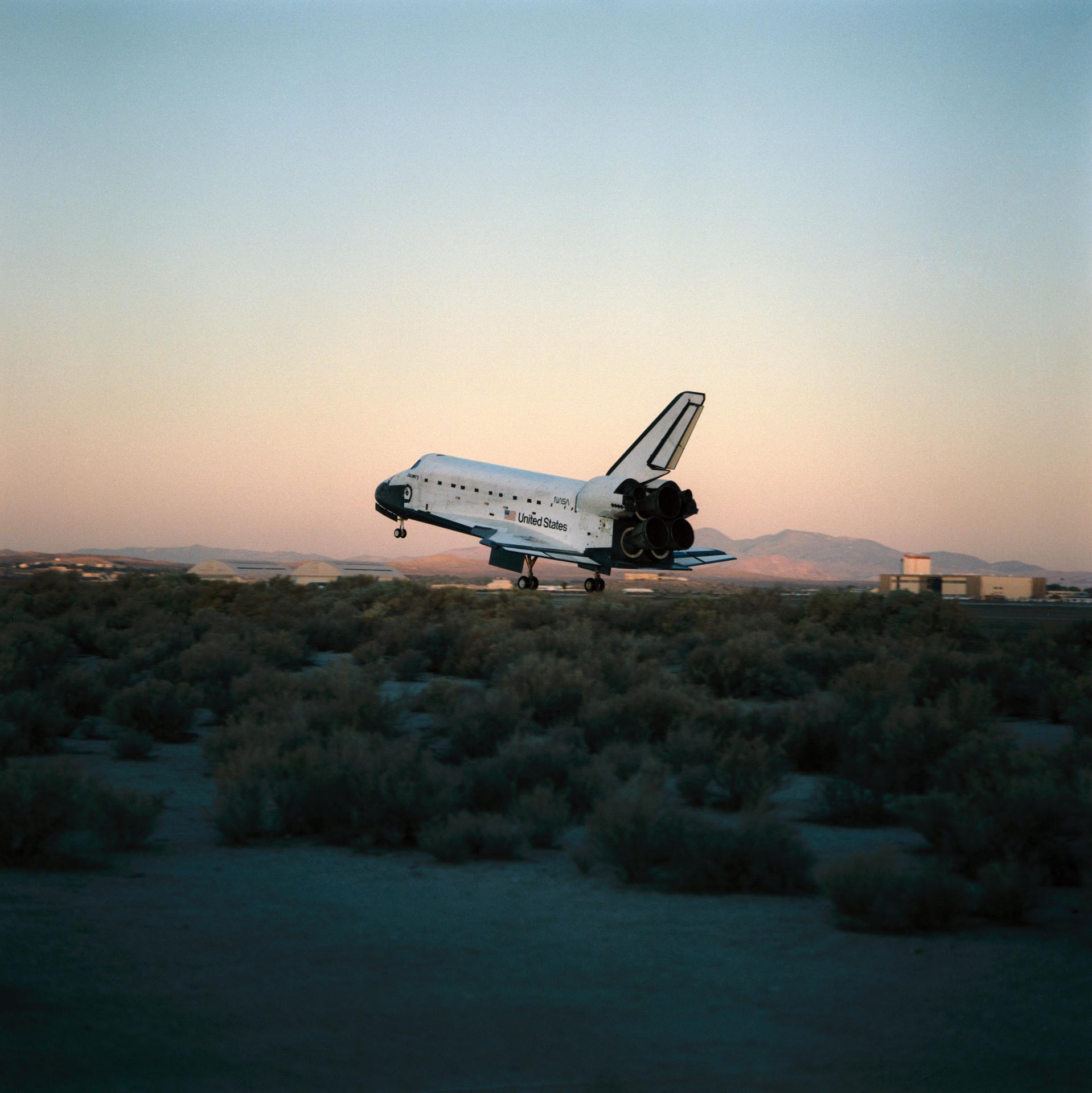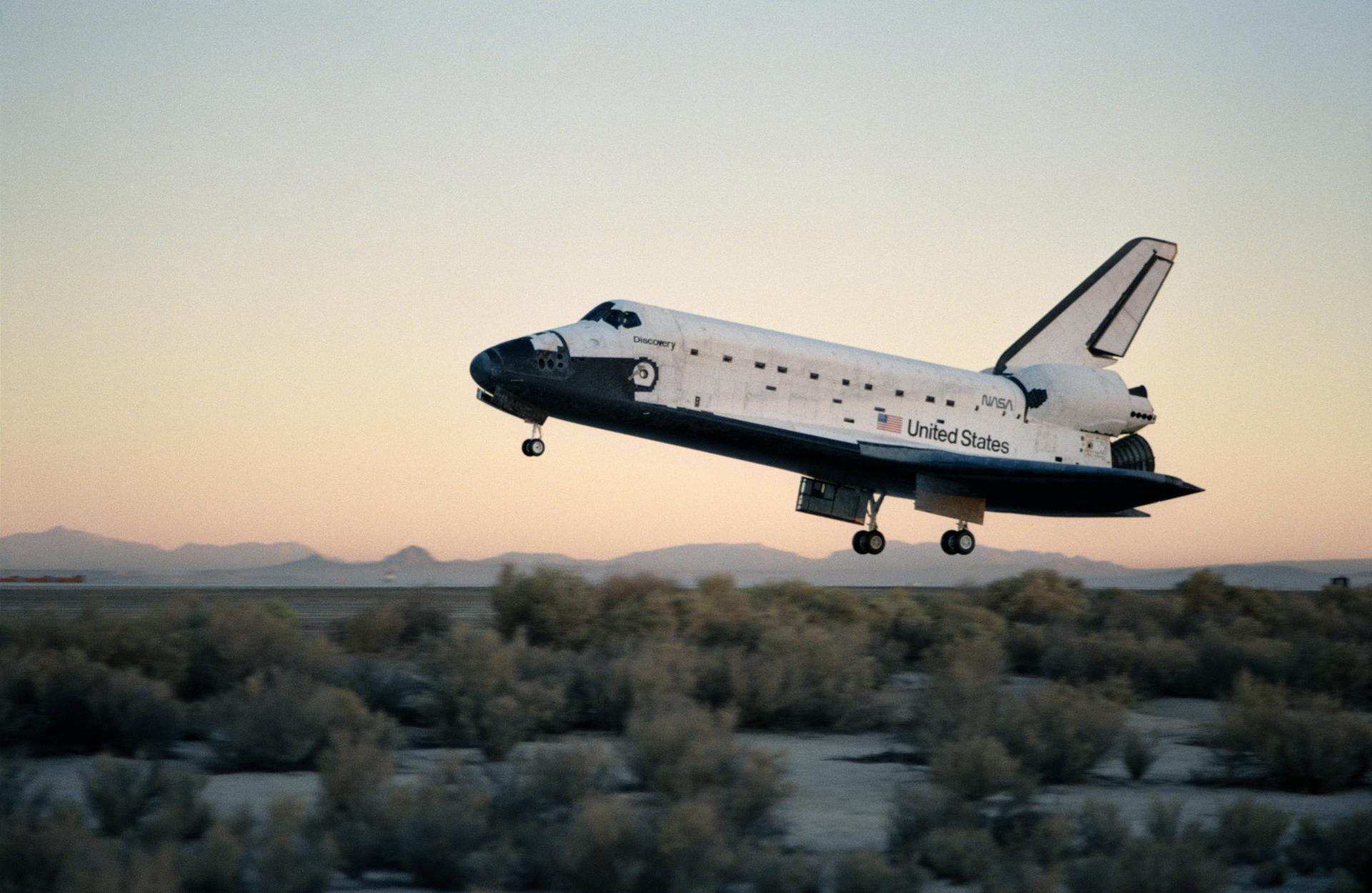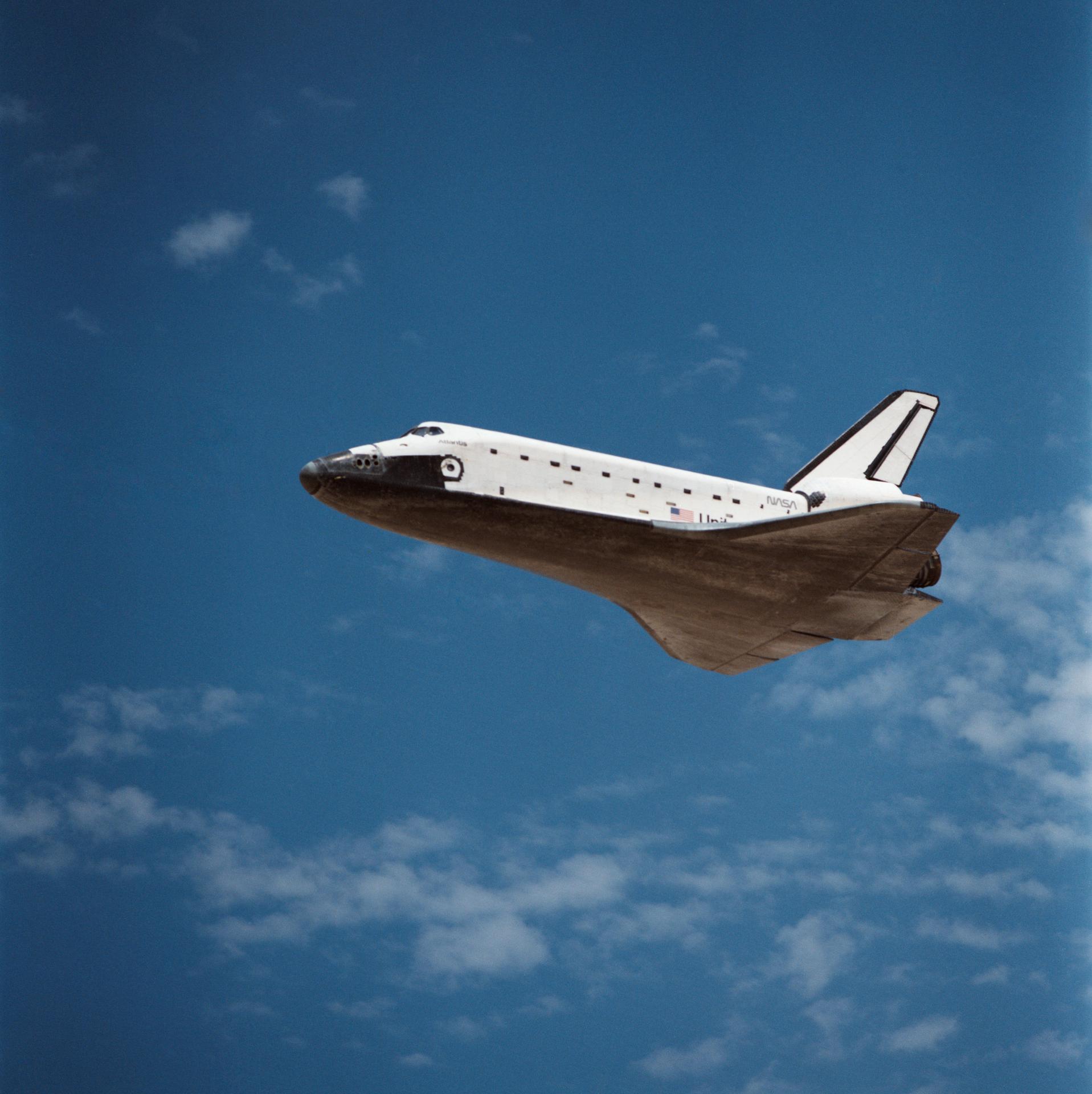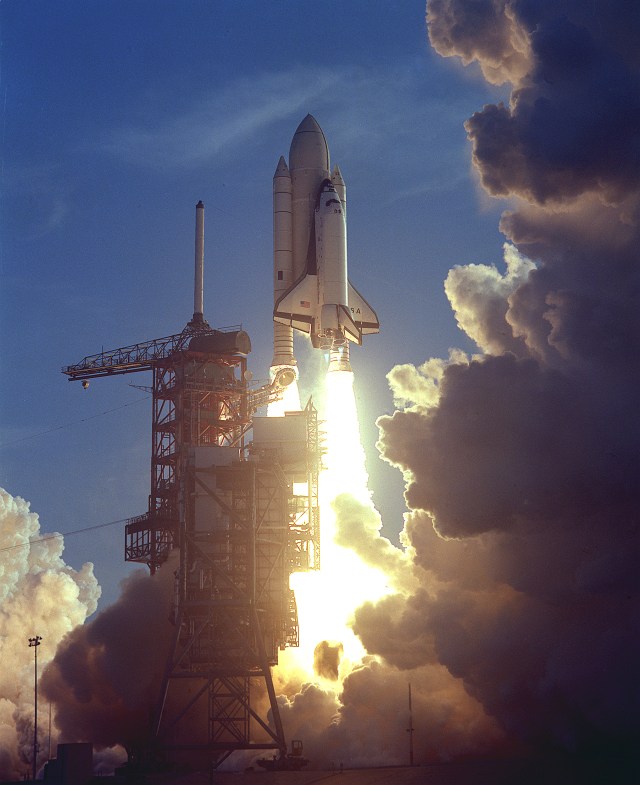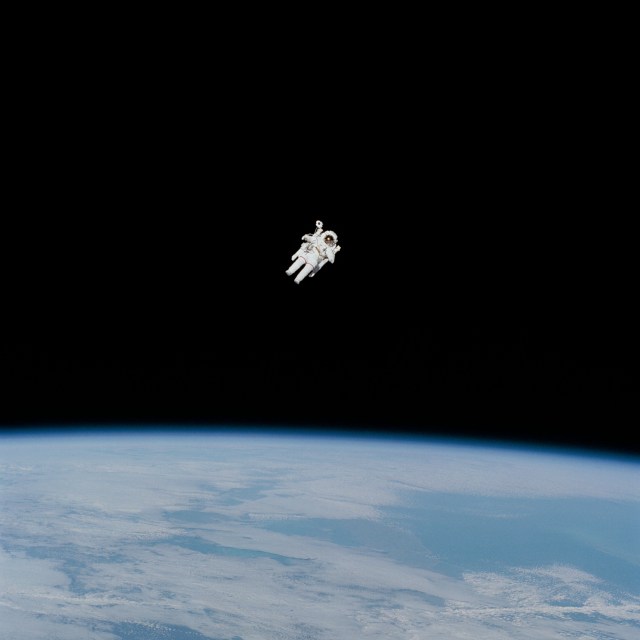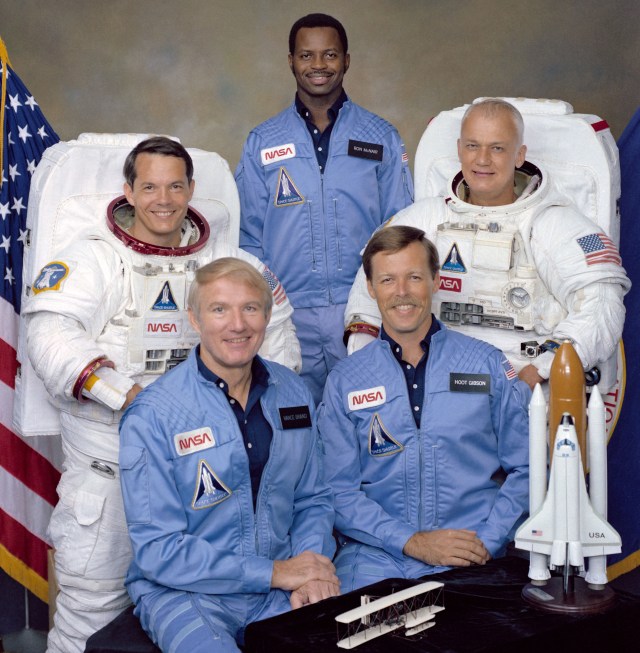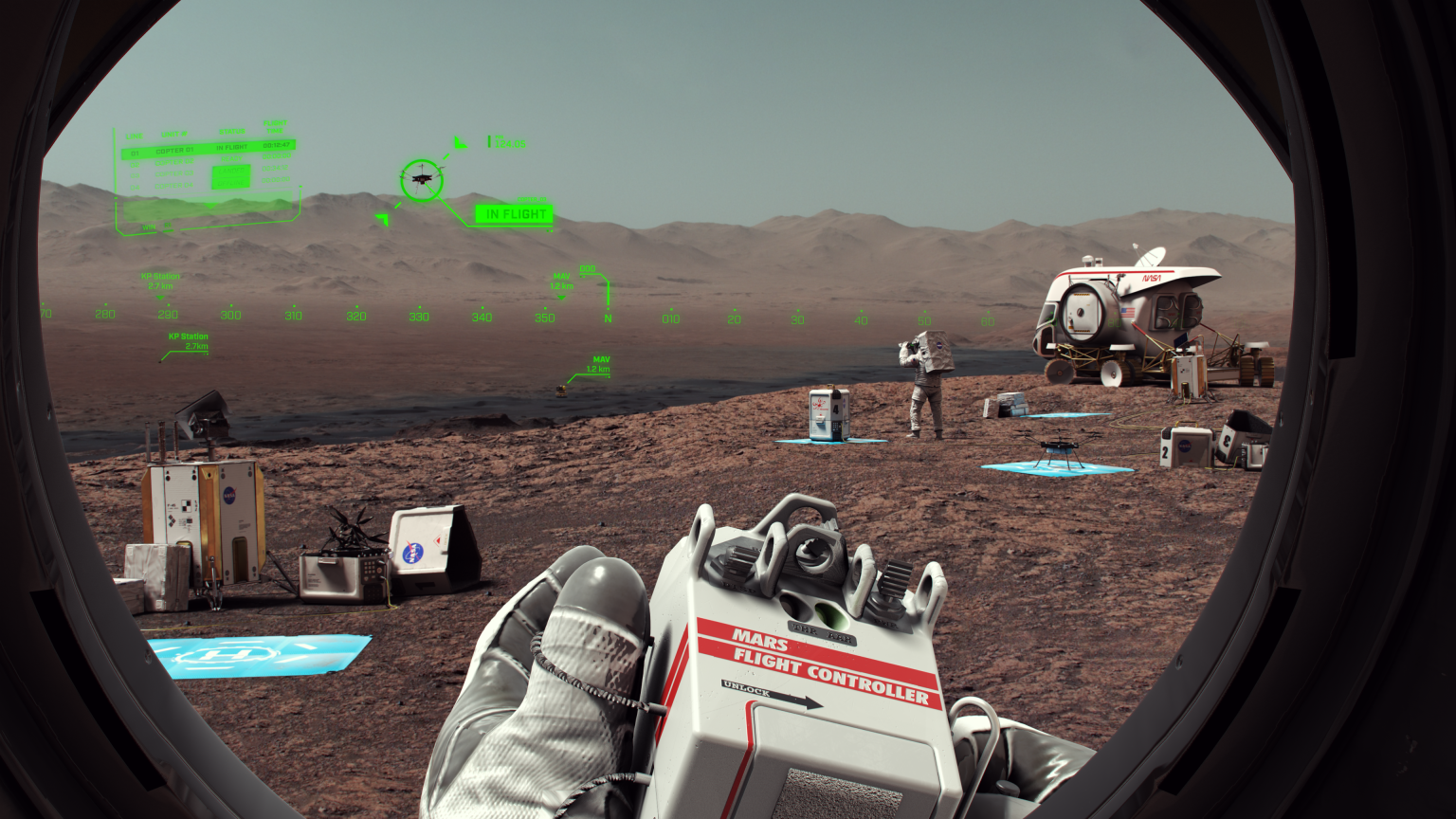
STS-41
STS-41 primary payload was Ulysses, a spacecraft to explore polar regions of Sun.
Orbiter
mission duration
Launch
Landing
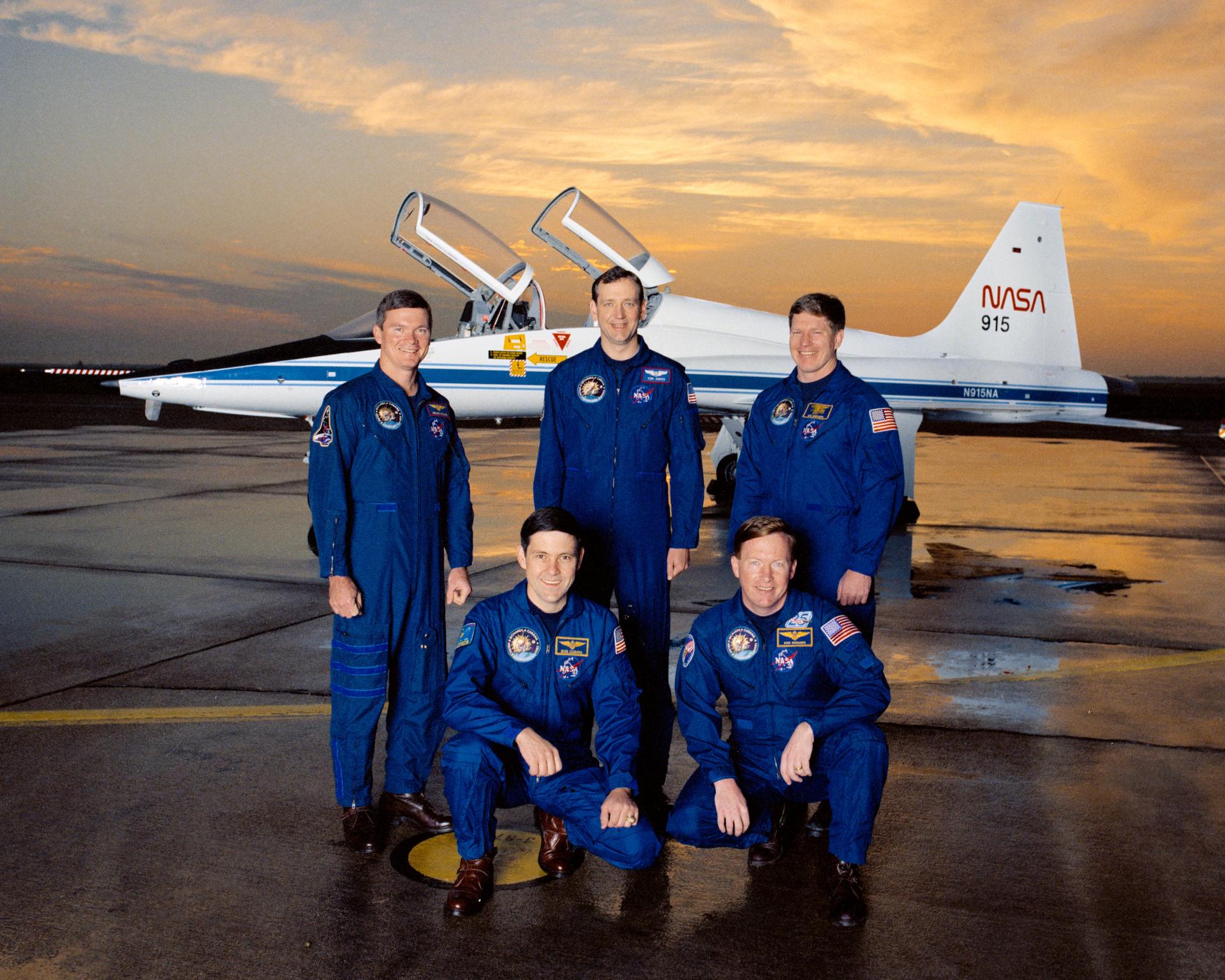
Mission Facts
Mission: Ulysses; SSBUV; ISAC
Space Shuttle: Discovery
Launch Pad: 39B
Launch Weight: 259,593 pounds
Launched: Oct. 6, 1990, 7:47:15 a.m. EDT
Landing Site: Edwards Air Force Base, Calif.
Landing: Oct. 10, 1990, 6:57:19 a.m. PDT
Landing Weight: 196,869 pounds
Runway: 22
Rollout Distance: 8,532 feet
Rollout Time: 49 seconds
Revolution: 66
Mission Duration: 4 days, 2 hours, 10 minutes, 4 seconds
Returned to KSC: Oct. 16, 1990
Orbit Altitude: 160 nautical miles
Orbit Inclination: 28.45 degrees
Miles Traveled: 1.7 million
Crew
Richard N. Richards, Commander
Robert D. Cabana, Pilot
Bruce E. Melnick, Mission Specialist
Thomas D. Akers, Mission Specialist
William M. Shepherd, Mission Specialist
Mission Highlights
The primary payload, ESA-built Ulysses spacecraft to explore polar regions of Sun, deployed. Two upper stages, Inertial Upper Stage (IUS) and a mission-specific Payload Assist Module-S (PAM-S), combined together for first time to send Ulysses toward out-of-ecliptic trajectory. Other payloads and experiments: Shuttle Solar Backscatter Ultraviolet (SSBUV) experiment; INTELSAT Solar Array Coupon (ISAC); Chromosome and Plant Cell Division Experiment (CHROMEX); Voice Command System (VCS); Solid Surface Combustion Experiment (SSCE), Investigations into Polymer Membrane Processing (IPMP); Physiological Systems Experiment (PSE); Radiation Monitoring Experiment III (RME III); Shuttle Student Involvement Program (SSIP) and Air Force Maui Optical Site (AMOS) experiment.
STS-41
Shuttle News
Retired Space Shuttle Locations
Shuttle Atlantis – Kennedy Space Center Visitor Complex Shuttle Discovery – Steven F. Udvar-Hazy Center Shuttle Endeavour – California Science…
Read the Story



























